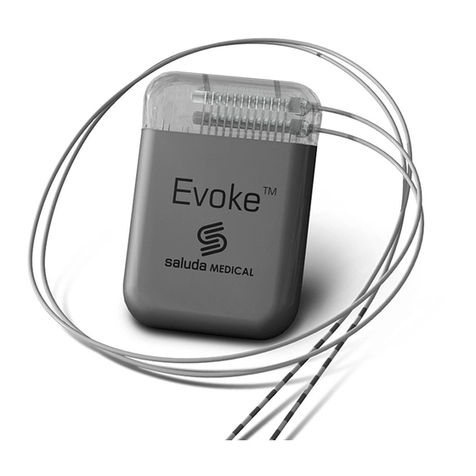
Document Reference: ENG-UMAN-000731 Revision: 5.00 Page 2 of 61
Table of Contents
PRIVACY STATEMENT ......................................................................................................3
1DESCRIPTION ...........................................................................................................4
2INDICATIONS FOR USE .............................................................................................5
3CONTRAINDICATIONS ..............................................................................................5
4SAFETY INFORMATION.............................................................................................5
4.1 WARNINGS ....................................................................................................................5
4.2 PRECAUTIONS.................................................................................................................7
4.3 POTENTIAL RISKS ..........................................................................................................11
5INTRA-OPERATIVE PROGRAMMING WITH THE CI ...................................................12
5.1 CONFIRMATION OF OPTIMAL LEAD PLACEMENT ..................................................................12
5.2 CONFIRMATION OF PROPER CLS CONNECTION ...................................................................14
6POST-OPERATIVE PROCEDURES..............................................................................14
6.1 CONNECTING AN ECLS TO EXTERNALIZED LEADS .................................................................14
7CLINICAL PROGRAMMING - INTRODUCTION...........................................................18
7.1 CLINICAL INTERFACE (CI) ................................................................................................18
7.2 CLINICAL SYSTEM TRANSCEIVER (CST) ..............................................................................19
8CLINICAL PROGRAMMING –USING THE CPA ..........................................................19
8.1 PROGRAMMING OVERVIEW .............................................................................................19
8.2 CONNECTING THE CI TO THE CST AND ECLS/CLS ...............................................................20
8.3 SET STIMULATOR TIME ...................................................................................................22
8.4 RETRIEVE OR SET THE PATIENT ID AND PATIENT ZONE ..........................................................23
8.5 MEASURE ELECTRODE IMPEDANCE....................................................................................24
8.6 SET UP LEAD ORIENTATION ..............................................................................................25
8.7 CHOOSE THE STIMULATION ELECTRODES AUTOMATICALLY......................................................26
8.8 START AND STOP STIMULATION ........................................................................................27
8.9 SET UP ECAP MEASUREMENT..........................................................................................28
8.10 SET UP FEEDBACK CONTROL (FC) THERAPY.....................................................................30
8.11 ENABLE FEEDBACK CONTROL .......................................................................................31
8.12 SAVE A PROGRAM TO THE STIMULATOR .........................................................................31
8.13 INTERLEAVED STIMULATION.........................................................................................33
8.14 NEUROPHYSIOLOGICAL MEASUREMENTS........................................................................36
9CLINICAL INTERFACE –SETTINGS GUIDE .................................................................42
9.1 STIMULATION SETTINGS MENU........................................................................................42
9.2 MEASUREMENT AND FEEDBACK SETTINGS MENU................................................................42
9.3 ELECTRODE SELECTION MODES .........................................................................................43
9.4 CURRENT STEERING .......................................................................................................43
9.5 PATIENT PERCEPTION.....................................................................................................44
9.6 CLS MENU ..................................................................................................................45
9.7 NAVIGATION MENU ......................................................................................................46
9.8 SETTINGS MENU ...........................................................................................................47
9.9 ERROR DISPLAY ............................................................................................................48
10 OPERATION OF STIMULATOR WHEN ERRORS OCCUR .............................................49
10.1 OUT OF COMPLIANCE .................................................................................................49
10.2 REFERENCE CLOCK ERROR ...........................................................................................49
10.3 ELECTRODE DISCONNECTED .........................................................................................50
10.4 CURRENT AT MAXIMUM .............................................................................................50
10.5 ERT CLIPPING...........................................................................................................50
































